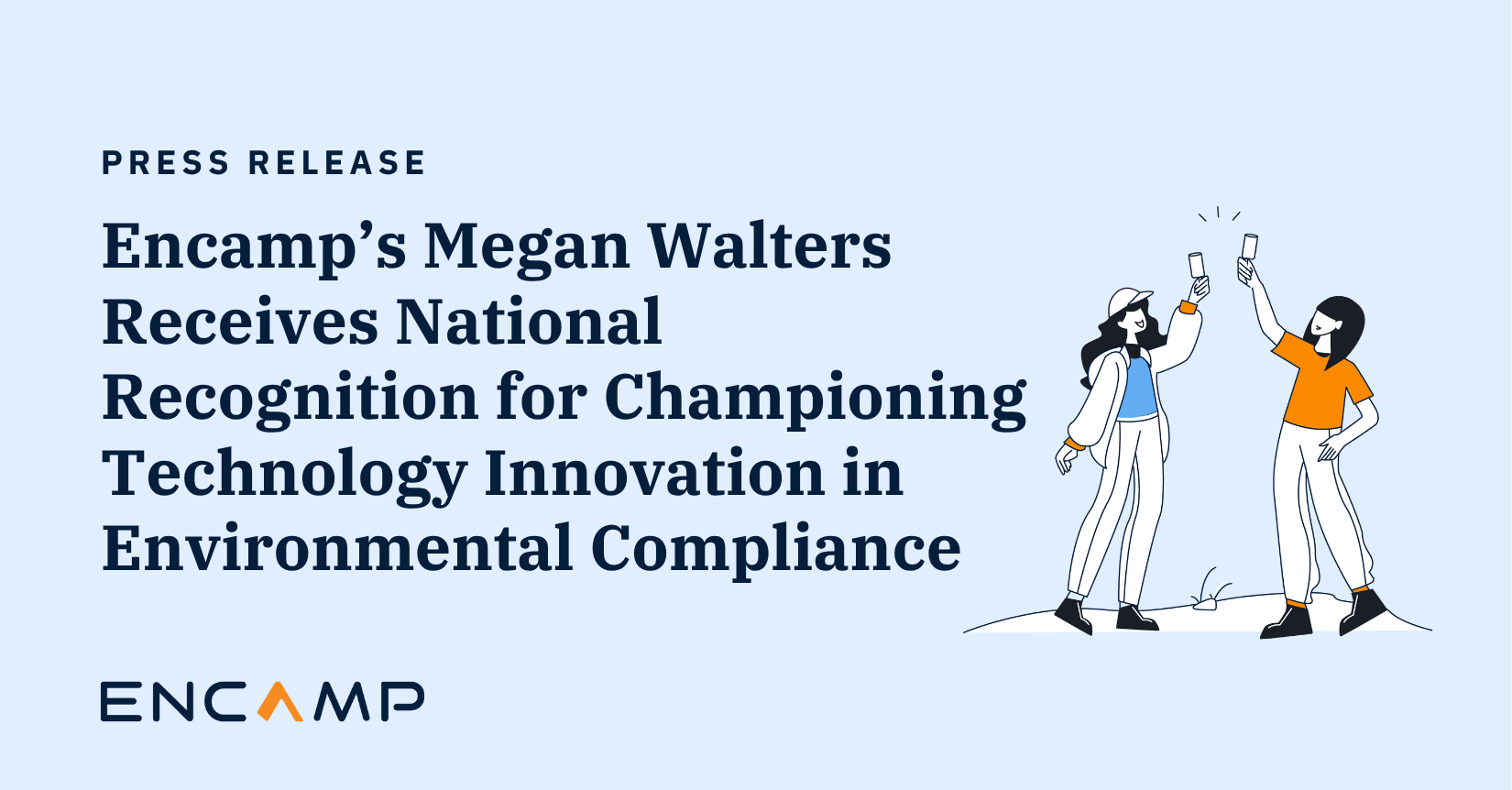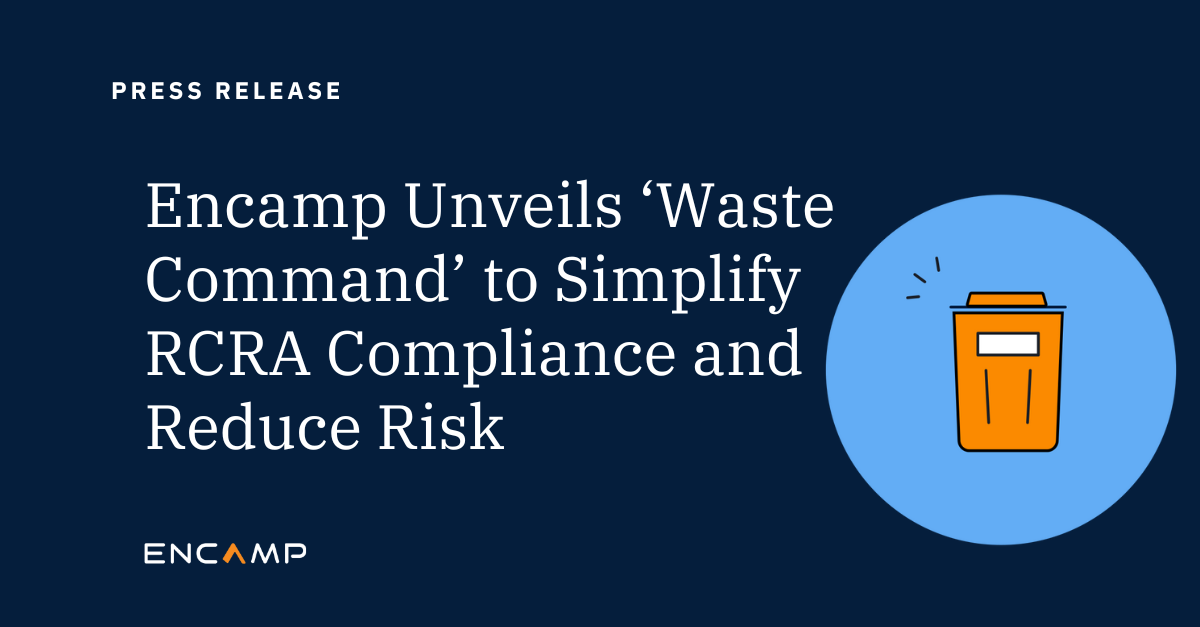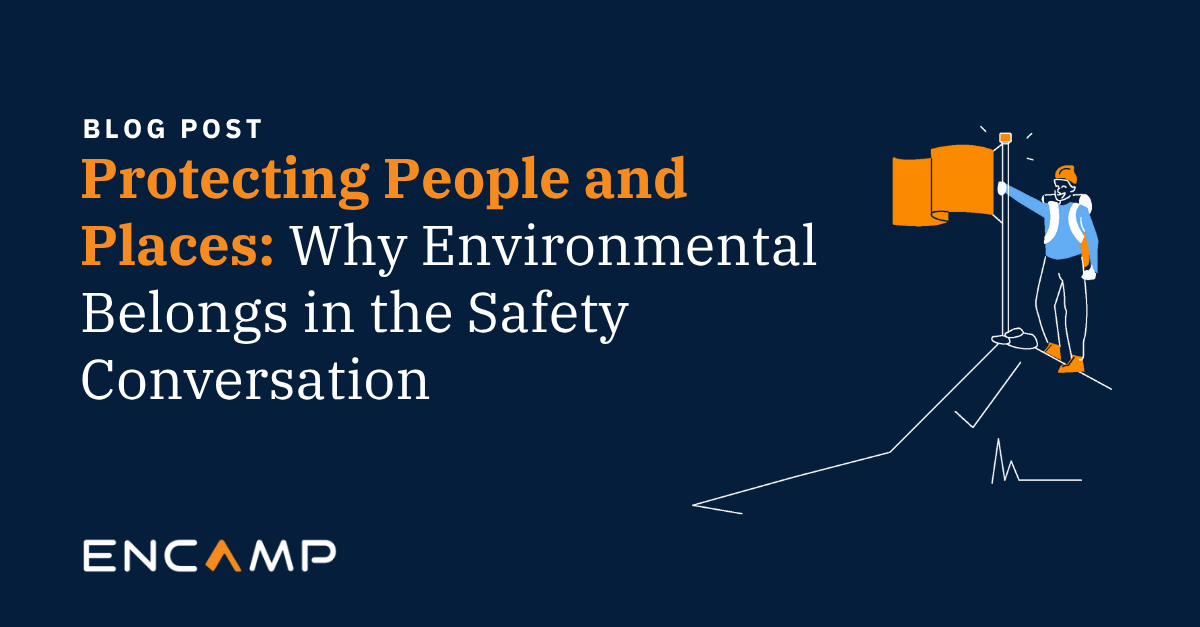Perhaps the only thing harder than coordinating work for EPCRA Tier II reports is having to do it remotely. But the pandemic has steered many EHS teams towards the same work-at-home model that thousands of companies and their employees have had to adopt. And for many EHS professionals, once the pandemic conditions finally subside, the remote model could well be longer-term or even permanent.
Encamp’s thinking? Embrace it. (Our workforce is entirely remote.)
While not everyone involved in EPCRA Tier II reporting can work from home, many of us have been doing it for quite a while. Successfully, including pre-Covid. Or if your team was distributed across locations and facilities before the pandemic, chances are you already had some kind of a remote framework in place anyway. So for Tier II prep, which is increasingly a year-round activity, it could just mean channeling more of your communications and legwork into a virtual process.
If you don’t use the following work-at-home best practices by now, consider them as the remote model continues to become a workforce norm.
Get everyone on the same EPCRA Tier II path
Rule #1 for a dispersed compliance team. Get everyone on the same path, both as an online workgroup and as integrated contributors. Then, emphasize collaboration to the nth degree. Even when final reports fall to one or two people, EPCRA Tier II reporting is a group process — from an EHS director to anyone who gathers and verifies data.
Provide structure with checklists and playbooks
Within a Tier II workflow, every person should know what’s expected by way of their role, local and federal regulations, scheduled tasks, and deadlines for those tasks. Particularly for a remote team, checklists and playbooks (or processes) provide structure and serve as guardrails to keep everyone going in the right direction. Such tools can further help ensure reporting accuracy by keeping details from slipping through the cracks.
Tools like playbooks are also easy to create as your team determines Tier II tasks and assignments — “easy” meaning “don’t overthink them.” Once tasks are discussed and solidified, organize them in a shared document accessible to everyone on the team. The document then becomes your playbook, and remote compliance teams should create as many such playbooks as necessary for Tier II efforts.
By clarifying roles and tasks this way, dispersed team members can work both collaboratively and transparently, yet independently. The team can also be more proactive, as opposed to reacting to issues that haven’t been thought through. You know, no winging it.
Meet often and communicate like clockwork
Even online, meeting regularly throughout the Tier II reporting process serves as another collaboration guardrail. It also makes for proactive communications, which are invaluable when an EHS team is working remotely.
Meet on-demand. When something needs to be done or resolved right now, an always-on video connection works best.
Weekly status and planning meetings. Mondays recommended. Regularly scheduled times preferred. Discuss what’s been done and what must be accomplished for the week. Call it a weekly sprint.
Daily standup meetings. Over-communication? Maybe so. But if you’ve ever been involved in a Tier II reporting effort, you know things change constantly. As a team, simply take a few minutes every day to stay caught up. It helps everyone address issues before they become problems. Standups also have a social aspect for a remote team. Sometimes people just want to say hello and see how everybody’s doing.
Set Tier II reporting goals per team member
Although some EHS compliance teams have Tier II reporting down to a science, the process isn’t typically a precise one. Yes, there are reporting deadlines to meet. And meeting them is extremely critical. But another part of being human is that we often accomplish different tasks in different ways — and working remotely only heightens this “independence.” Figuring out what works best for each person on your team therefore becomes more important.
The Tier II process is a journey; as a result, one idea is to break the process into goals for each specialist and set deadlines for each goal. Then, let that person go about achieving the goal the best way they know how. The approach also lets each member of the team set a work-at-home path that’s most comfortable for them, which can actually make them more productive.
Of course, team members should abide by playbooks and checklists when you have them. But on the Tier II path overall, making it a path of achievable steps better accommodates different work styles.
Share documents and work visibly
For EPCRA Tier II reporting, just think of all the spreadsheets and forms and records that need to be reviewed and verified. This makes document sharing yet another vital guardrail for collaboration among an EHS compliance team working remotely. The first key is having an effective document storage hub in place. The second is creating an environment in which all remote users can access, review, and edit documents as a group.
Encamp works with several compliance teams who use database apps like SAP or Salesforce for document management. For our customers’ info, we help them also organize their data for Tier II reporting using the Encamp platform for environmental compliance management. (More on our platform in a minute…)
Beyond SAP or Salesforce, apps like Notion, Google Docs, Paper, Quip, and Coda are also good apps for Tier II doc sharing. And while ProofHub is more of an overall project management software, it includes an online proofing tool to review and proof files. ProofHub additionally integrates with other apps like Google Drive, OneDrive, Dropbox, Box to bring all documents together in one place.
Consider Encamp for working remotely
Ok, shameless plug here. Encamp’s platform and EPCRA module for Tier II reporting are a cloud-based SaaS solution that lets a compliance team work entirely remotely. From wherever your specialists are, you centralize compliance information with profiles for every facility and a 50-state aware compliance tracker. Compliance applicability for each facility is determined automatically.
To get every team member on the same path and keep reporting on track, you do it via the Encamp Tier II Dashboard. Automating tasks and reminders lend structure to your remote team and let you establish goals per team members. Integrating workflows for state fields from the EPA, NOAA, and all 50 states, plus calculations to confirm TPQs and EHSs, basically creates a Tier II playbook for you.
And in simplifying EPCRA Tier II and other EHS reporting, you get intelligent forms and an automated reporting and submission process. Encamp additionally lets you maintain, share and review audit-ready records and compliance docs in one place.
Made for consultants, too
The Encamp platform for EHS consultants is a single portal to automate and streamline EPCRA Tier II reporting for all your clients’ facilities, in all 50 states. As a reporting system, you get a first-of-its-kind solution designed entirely from a consultant’s perspective. As an intelligent platform, it’s the same technology that’s made Encamp a leader in the environmental compliance industry.
And as a cloud-based Software as a Service (SaaS) offering with no software to install, you get going in days, work from anywhere, and realize incredibly fast time to value.
Transforming the way enterprises stay in compliance
Encamp is on a mission to create a world where good for business can equal good for the environment. We help enterprises transform compliance programs and human processes into a technology-driven system that lays the foundation for accurate and ongoing environmental compliance through a blended method of intelligent high-tech solutions and high-touch expert support.
Tom Bailey
Tom is the Senior Content Writer at Encamp. And like all other Encampers, he’s in tune with the environment and what happens to it. He’s been writing about creative technology solutions for longer than he cares to admit.



